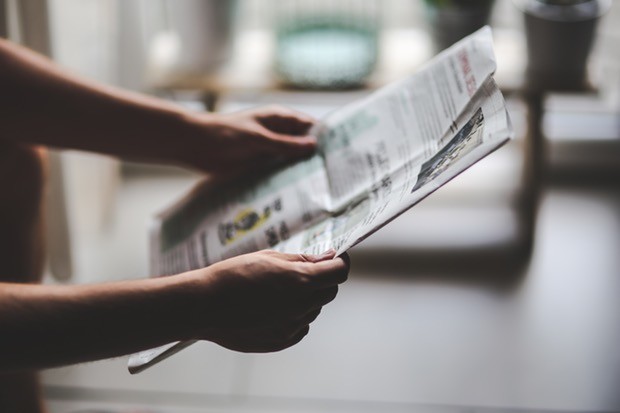How can a physical device or object, connected to the web, have a positive impact on how people get their news and interact with it, at home and in public spaces?
This is what NewsThings, a project developed by the University of Central Lancashire (UCLan) in collaboration with Trinity Mirror and Thomas Buchanan Consultancy, is currently exploring, with support from the second round of the Google Digital News Initiative fund.
It explores how news and information can be combined with ambient design and the Internet of Things (IoT) to create prototypes that can convey editorial content to people, and how the data they provide could be of use to publishers to understand their readers better.
The project team, which includes John Mills, lecturer and researcher at UCLan, Alison Gow, digital innovation editor for Trinity Mirror Regionals and Tom Metcalfe, designer and founder of Thomas Buchanan Consultancy, has spent the last few months organising creative workshops in Manchester and Bristol, talking to people about how they consume news.
"We are all conscious of the advantages of analytics, but we want a broader story," Mills told attendees at a session at the International Journalism Festival in Italy earlier this month.
"We want to talk to them not just about their digital news consumption, but about what kind of news they are consuming, as well as how, where and when."
Once the answers have been provided, readers are asked to take home for the day a kit that includes a camera and motion sensors, so they can visually record their interaction with both news and different objects around them, from a motion point of view.
"I am interested in how news can be deconstructed," Mills added.
"Weather on a news website gets huge amounts of traffic for example, so if you think of the assets a publisher has and the data they generate every day, how can you work with it in a form that isn't necessarily on a smartphone, tablet, or laptop?"
Metcalfe's previous work includes products such as Rain Cloud, a device that pulls in data from the Met Office in the UK and displays droplets to tell people if it's going to rain. He said his perspective in the NewsThings project is focused on the user and whether people are engaging with news in a way that feels natural to them.
"Push notifications just don't work, they arrive at the wrong time or are unactionable at the moment when they do, so with Rain Cloud, the drops provide that information in a simple way."
Gow said that when people arrive to a new platform, they "first look for the familiar", so Trinity Mirror is hoping to find out how connected devices can have a similar role to the one newspapers used to have on the kitchen table in readers' homes.
Regional title Liverpool Echo has previously turned a physical sign of the city's symbol, the Liver Bird, into a connected object used for audience engagement. If a football match is happening for example, portions of the sign would light up in blue to indicate sentiment around the event to people in the newsroom, based on data from the web.
"It is a way of re-establishing a connection with communities, and the potentially forgotten or not engaged user," Gow explained.
"Apart from the editorial opportunities in getting content from our local titles into people's homes, that is giving them ideas for what to do over the weekend, or information about the weather, or news, there are also huge commercial opportunities in this.
"We are not suddenly going to release a device, but we will have a better understanding of our audience and where we fit in their lives."
Free daily newsletter
If you like our news and feature articles, you can sign up to receive our free daily (Mon-Fri) email newsletter (mobile friendly).
Related articles
- Why PressPad closed down, with Olivia Crellin
- How a Greenlandic publisher uses its own AI translator to boost subscriptions
- Join us at the Newsrewired conference on 22 May 2024
- 10 creative ways to interview celebrities and experts
- How NRK uses AI-generated summaries to boost younger readers’ engagement










